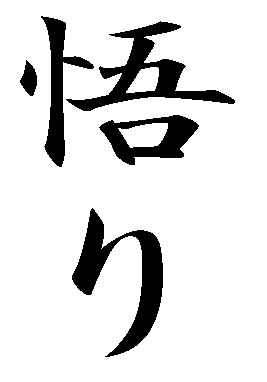So the lines you describe above, logically don't exist ?
INT21
But this is it what basic geometry relies upon. Theoretical, abstract mathematical entities, which, ironically, exist only in a pure logical way. Which leads to the old philosophical debate, are mathematical objects real, having an existence of their own in the objective world, or are they mere creations of the human brain ? The relevance of your arguments or of counter-arguments that could be opposed to them relies on the answer we give to this question. However, one thing can not be denied, that they do appear to describe the physical world with a great accuracy.
Kantor went mad, the fate of more than one mathematician,. He proposed that there was not only one infinity, but an infinity of infinities.
His argument was simple. Take a pair of line. fill the gap between with lines. then expand the result. You will have more gaps. fill in these gaps, expand again, more gaps appear. Ad infinitum.
There is no need for imaginary zero width lines to prove my point. A you kindly pointed out, kantor did it years ago with real lines. I have no wish to follow him into madness.
No, this is not at all what Kantor said (and he definitely disapproved of your claim about straight lines) ! It doesn't work that way at all. Yes, he proposed – or more exactely, he unearthed that not all infinite sets could be put in a bijection as he initially believed, despite that some hugely counter-intuitive bijections could be drawn between sets that our mind would never at first sight believe to be equipotent (as mathematicians say, which means that they have the same cardinal). This is very important to understand : his «infinity of infinities» did not mean that infinite sets can include or be contained in other infinite sets, but that not all infinite sets are equipotent (mathematically, it means an infinity of infinite cardinals – and, in a more complex way, ordinals ; as is detailled in VSauce's video). So that it works in a very precise way, and it can't be used to assert everything (and definitely not that there additionnal straight lines between the first and second circles, as all lines are already contained in the first circle). *
..If something is infinite it would not have an end or start...
Exactly.
Which is why mathematicians hate the idea so much. When an infinity drops out of an equation there is much rending of cloth and gnashing of teeth.
Nonetheless, those are notions that are routinely handled by mathematicians. ℕ, set of all whole (positive) numbers, has a beginnig and no end, while the set of negative numbers has no beginning but has an end. Also, take the following intervals of real numbers, all sets including an infinite amounts of elements : [0;1], it has a beginning and en end, ]0;1] has no beginning and an end ; [0;1[ has a beginning and no end ; ]0;1[ has no beginning and no end. As you noted, physicists also acknowledge the notion of a infinite universe, many astrophysical models postulate such an endless universe, both in space and time. Even a curved, closed space postulates that space is curved into something, a larger dimensional space, potentially infinite, exactely as the Earth with its two-dimensional surface is immersed in a three-dimensional space.
* How does it work, exactely ? One can easily see that ℕ, the set of all whole numbers, can be put in a bijection with one of its parts, the set of all even numbers :
0 ↔ 0
1 ↔ 2
2 ↔ 4
3 ↔ 6
4 ↔ 8
5 ↔ 10
6 ↔ 12
7 ↔ 14
and so on......
Or as Galileo noted, with the set of perfect squares (squares of whole numbers)
0 ↔ 0²= 0
1 ↔ 1² = 1
2 ↔ 2² = 4
3 ↔ 3² = 9
4 ↔ 4² = 16
5 ↔ 5² = 25
6 ↔ 6² = 36
7 ↔ 7² = 49
and so on......
Of course, we can do the same thing with all powers of 2 (2⁰, 2¹, 2², 2³, 2⁴, 2⁵, 2⁶, etc...), and an infinity of other series. In fact, when you multiply the infinite by 2, 3, 4, or by any whole number n as big as it can be, or even by itself, or n times by itself, you still have the infinite, it is not even affected by the number of dimensions involved. ℕ × ℕ has the same cardinal than ℕ or ℕ × ℕ × ℕ.
So, if we take א an infinite (also called transfinite) cardinal, we have :
א =
2 ×א=
n × א =
א×א ;
However, א to its own power, also equal to n to the power of א,∀n > 1, is superior to א. It is in fact equal to P(א), cardinal of the set of all subsets of a given infinite set E, whose cardinal is א . So that a set, even if it is infinite, can not be put in a bijection to the set of all its parts. What Kantor found, is that there are what we may call classes of infinite sets, all of same cardinality, each following the class of sets of whom they are the sets of subsets, and preceding the class of sets of their subsets.
So that we have אₒ, cardinal of ℕ (and all equipotent sets, rational numbers, computable numbers, finite texts of any size etc...) ; then cardinal of P(ℕ) and all equipotent sets (real numbers, complex numbers, points on a line or in a plane...), then cardinal of P(P(ℕ)) (sets of real numbers, functions, curves...), then cardinal of P(P(P(ℕ))) (sets of functions, topological transformations...), then cardinal of P(P(P(P(ℕ)))) and so on ad infinitum.


